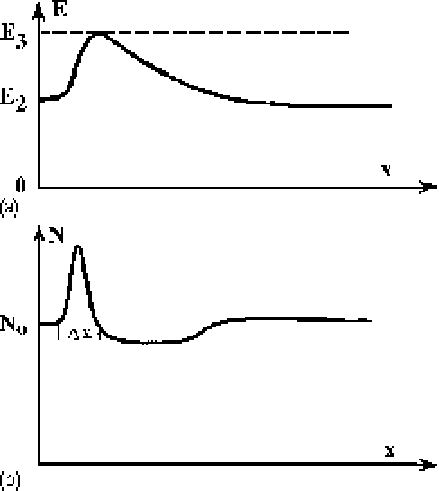Environmental Engineering Reference
In-Depth Information
Figure 5.15
The distribution of the electric field (a) and the electron number density (b) in the
electric domain.
boundary zone of the electric domain is of the order of
D
/
w
.Theforwardboundary
zone size can be estimated from (5.160), and is
Δ
x
D
Δ
E
/(4
π
eN
0
Δ
w
), where
w
min
(see Figure 5.14). A concomitant of the
distribution of the electric field strength in the electric domain is the distribution
of the electron number density that is shown in Figure 5.15b and follows from the
Poisson equation (5.156).
Δ
E
D
E
3
E
2
and
Δ
w
D
w
(
E
2
)
5.5.8
Striations as Ionization Waves
Striations or strates are plasma structures that are observed in a positive column of
a gas discharge of low or moderate pressure [84-89]. The column is striped in an
alternation of luminous and dark regions. Striations have a rich history of study,
and a detailed description of some aspects of this phenomenon was made in the
nineteenth century [90-94]. Thomson [95, 96] was the first to describe the oscilla-
tions of the positive column of a gas discharge, and his equations were improved
by Druuyvesteyn [97, 98]. These oscillations may be considered as standing waves
- stationary striations. Striations can be at rest or move to electrodes from the pos-
itive column. In addition, striations may be self-induced oscillations or may be
excited by an external source [99-101]. In both cases they characterize wave prop-
erties of a gas discharge plasma. Striations exist only in certain ranges of currents
and pressures, although this range may be wide enough. For example, in hydrogen,
striations exist in the pressure range which varies within the limits of eight orders
of magnitude and in the range of discharge currents that covers four orders of

